As the story goes, around 800 AD, an alchemist in China mixed sulfur, charcoal, and a food preservative hoping to find the secret to eternal life. Instead, the mixture caught on fire, and gunpowder was born. When the powder was packed into bamboo tubes and lit on fire, history had its first fireworks. Today, artists uses fireworks as an art medium creating artworks right in the sky.
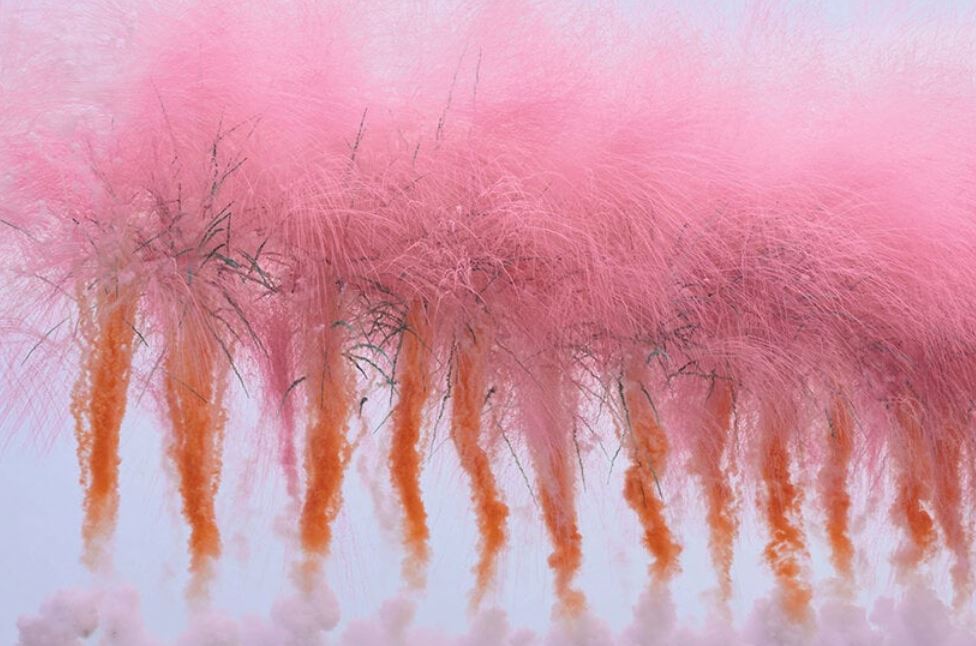
Renowned contemporary artist Cai Guo-Qiang uses gunpowder to stage explosive events outdoors, which are defined by the element of surprise. Commissioned by Anthony Vaccarello for French fashion house Saint Laurent, on June 29, 2023, at 8 pm, he set off about 40,000 daytime fireworks in tribute to those who lost their lives in tragedies, including the 2011 Great East Japan Earthquake and Coronavirus pandemic. The artwork was set in Japan, along the Iwaki coastline in Fukushima.
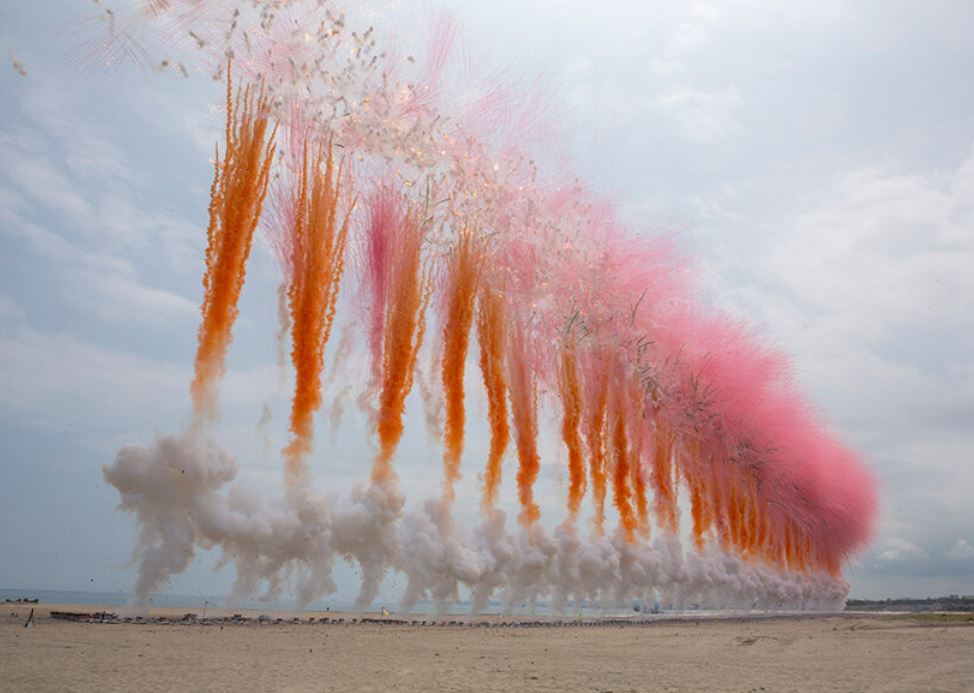
When the Sky Blooms with Sakura by Cai Guo-Qiang (also header image)
From 1986 to 1994, the artist used to work in Japan, including Iwaki, and even after relocating to the United States, he kept in touch with the people he met there. That is why the artwork bears a special meaning to his heart.
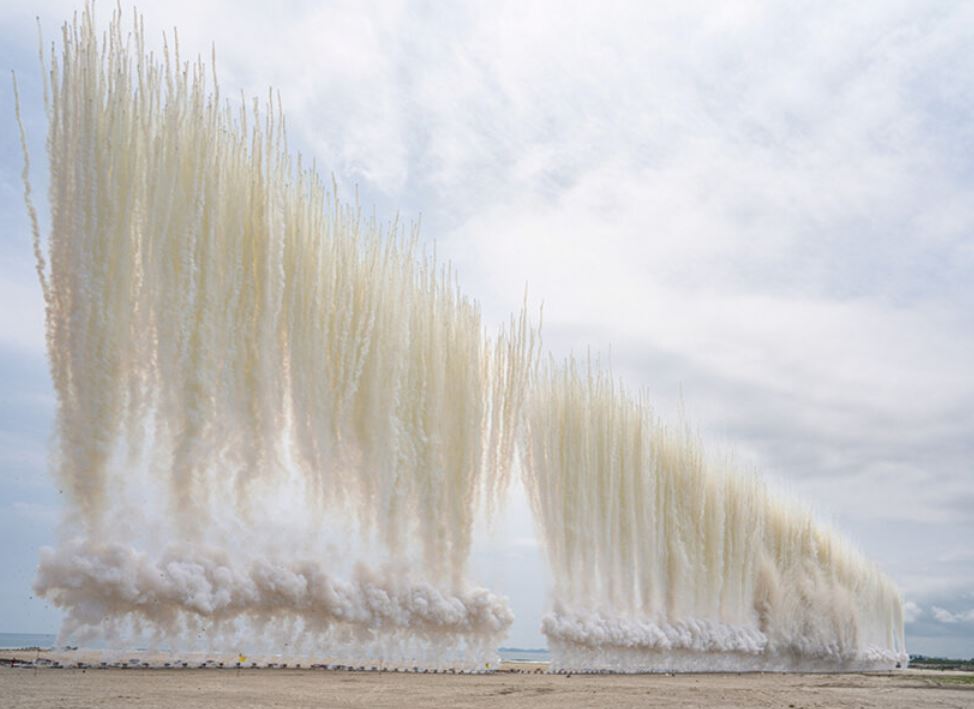
When the Sky Blooms with Sakura by Cai Guo-Qiang
Entitled When the Sky Blooms with Sakura, the artwork was launched in three visual sequences carefully arranged to compose different pictures. Following the image of twelve white chrysanthemums and blue waves symbolizing a tsunami, there came pink and orange bursts evoking cherry blossom trees that spanned 400 meters along the Iwaki coastline.
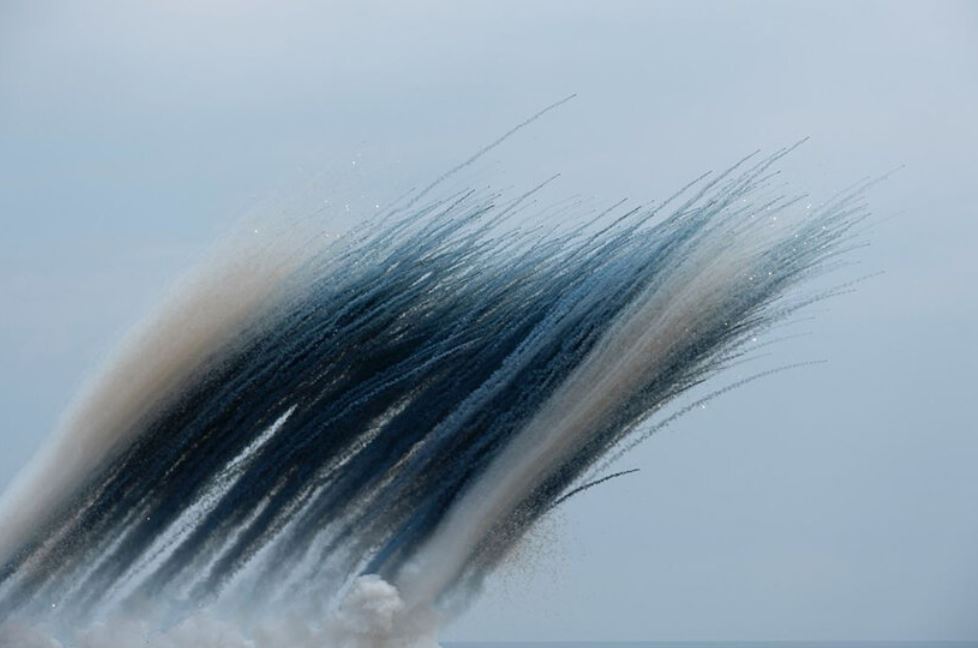
When the Sky Blooms with Sakura by Cai Guo-Qiang
Aimed to convey a message of hope and renaissance, the daytime fireworks were live-streamed on Saint Laurent’s website and broadcasted worldwide through various physical and digital platforms including LED billboard screens, each enlivening urban centers across the world.
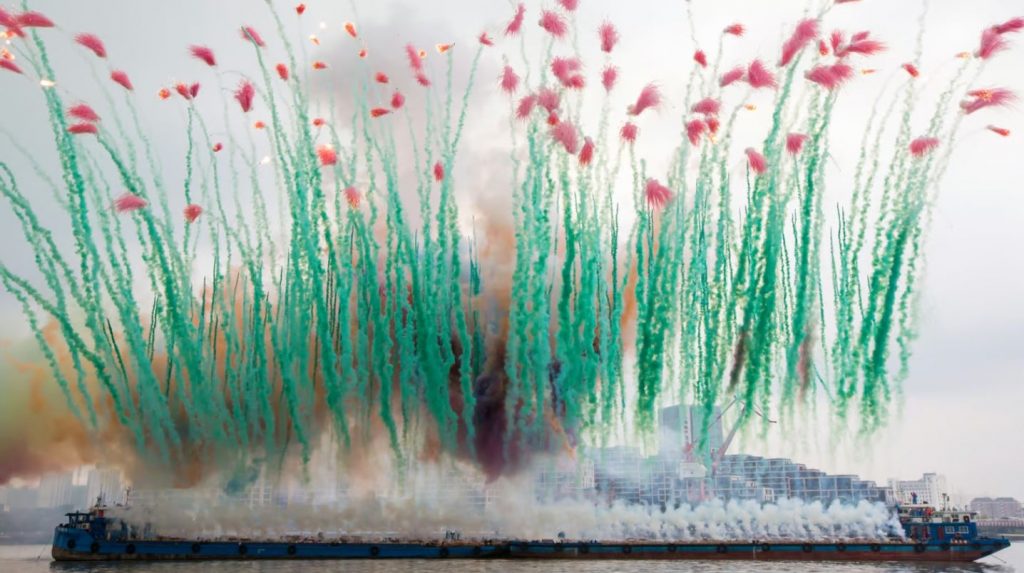
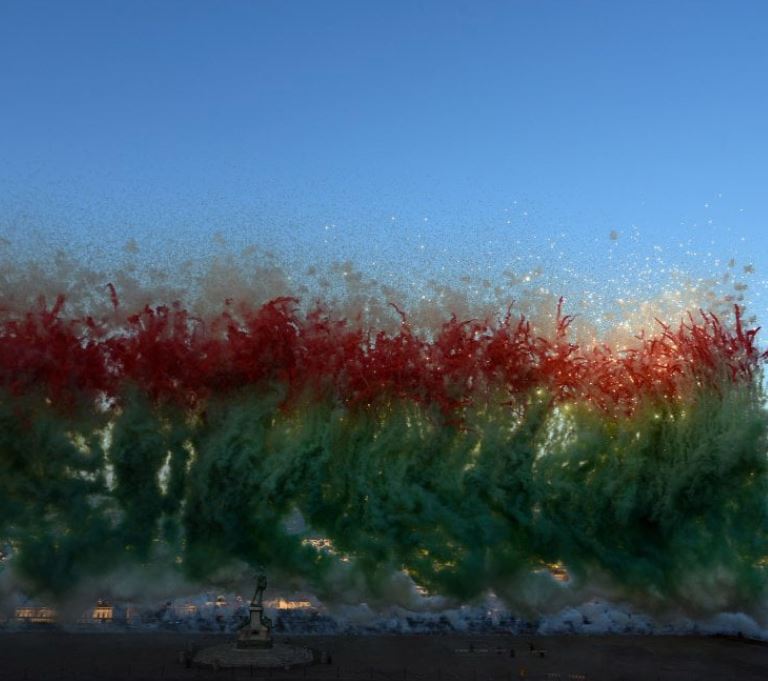
City of Flowers in the Sky by Cai Guo-Qiang
Back in 2018, Cai Guo-Qiang used the sunlit sky as a canvas for an explosion event dubbed City of Flowers in the city of Florence, Italy. During the spectacle, 50,000 customized fabricated fireworks shot out smokes resembling thousands of flowers to celebrate the opening of the artist’s solo exhibition Flora Commedia: Cai Guo Qiang at the Uffizi.
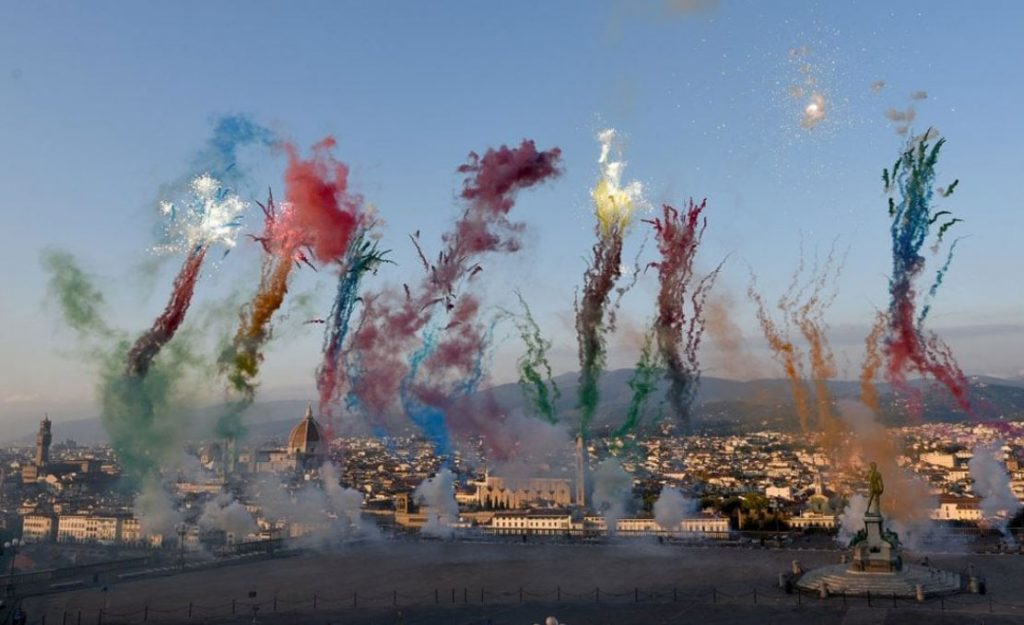
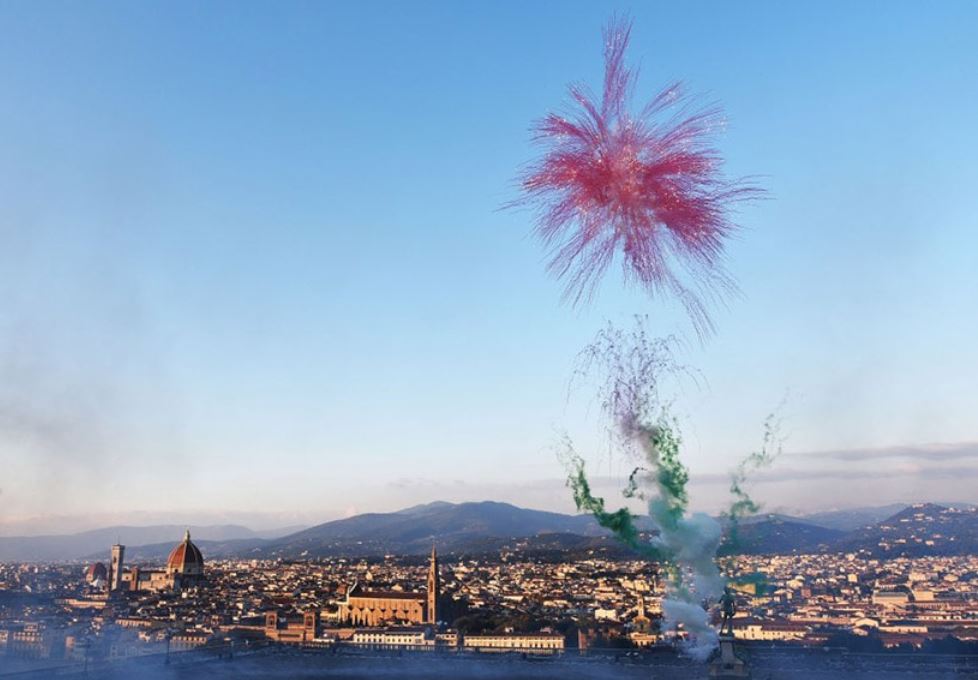
City of Flowers in the Sky by Cai Guo-Qiang
Viewers from Florence and around the world could see the waves of flowers and greenery tumbling into the clear sky from all corners of the city, even the nearby countryside. The firework event started by suddenly filling the sky with the roar of rolling ‘thunder’, followed by a rush of violent, thrashing silver flashes and smoke colorful columns. Originally, the rhythm of this work was inspired by Botticelli’s Primavera; along the way, the artist felt the impulse of flirting with Michelangelo’s David.
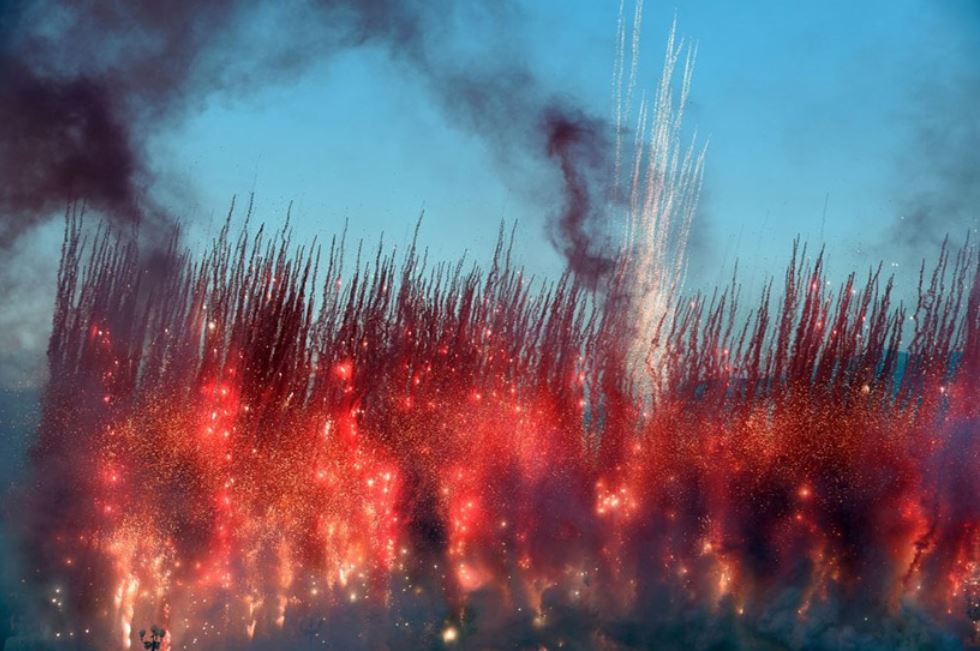
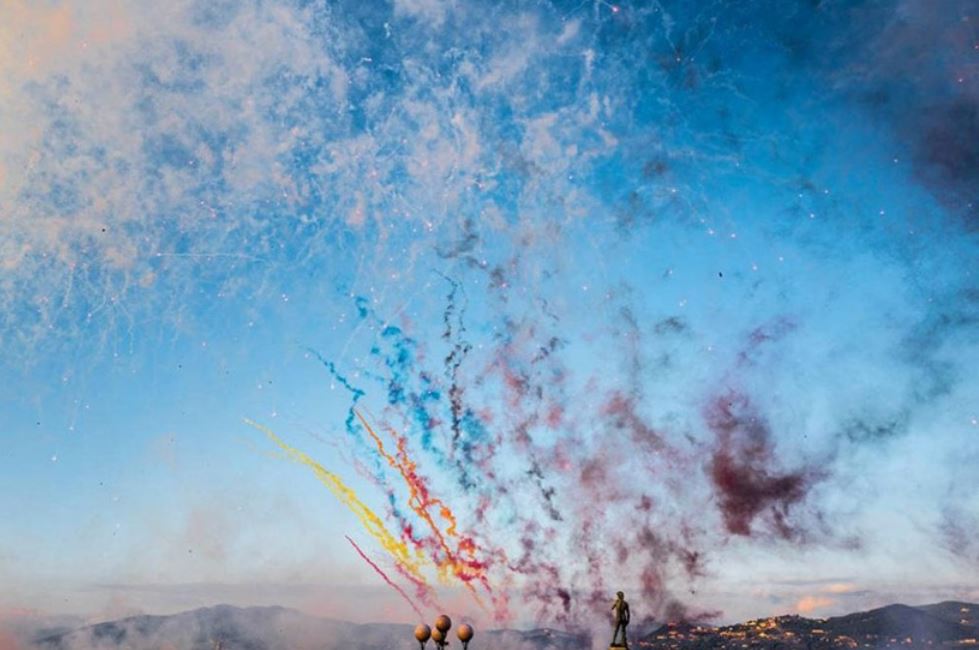
City of Flowers in the Sky by Cai Guo-Qiang
The explosion, which lasted 13 minutes 30 seconds, painted the Florence skyline with the color of the Renaissance represented at the Uffizi, making the viewers experience together the awe and warmth of the spirit of Renaissance painting as it reappeared in the modern day.
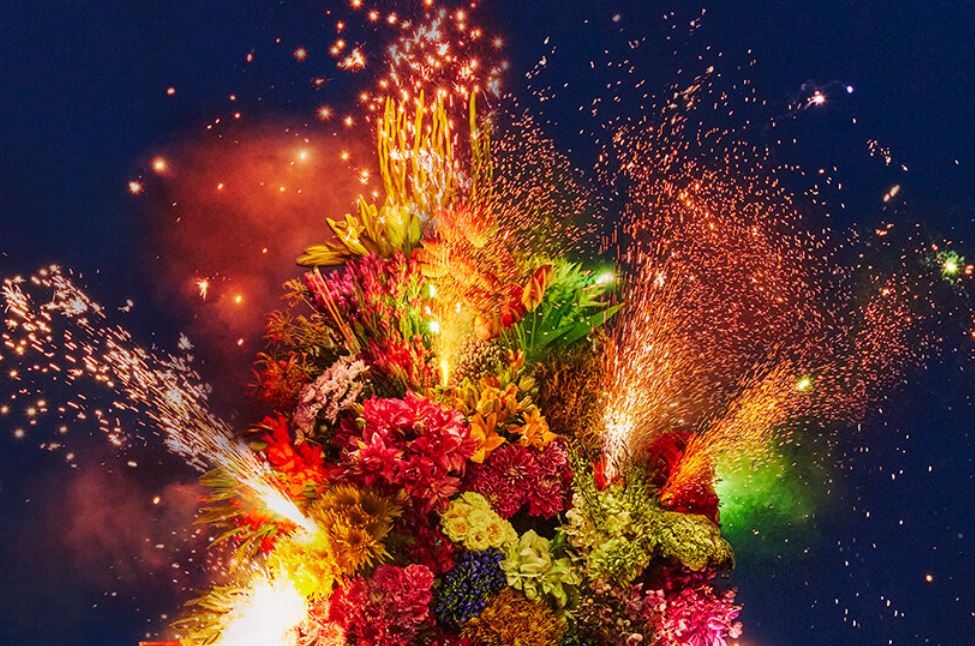
HANABI by Azuma Makoto
For his latest work, Japanese artist Azuma Makoto, known for his creative botanical sculptures, merges the ephemeral beauty of flowers with the rapid dissipation of fireworks as a reminder of the fleeting nature of life, both human and floral.
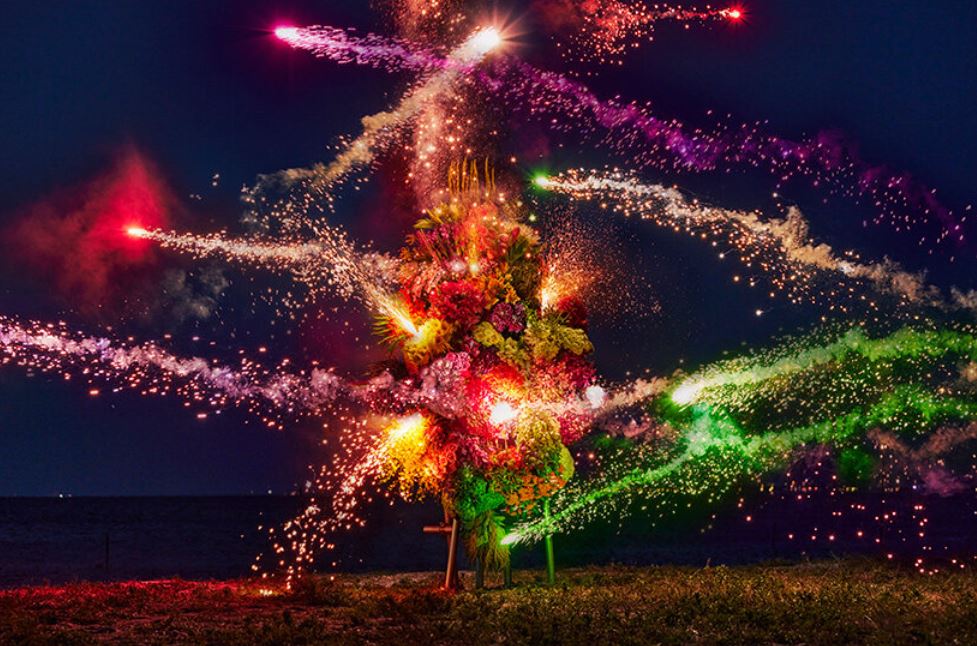
HANABI by Azuma Makoto
Titled HANABI, the installation is made up of 50 different types of flowers, all of which were sourced from across Japan and arranged in a cascading formation, creating a colorful and lively display.
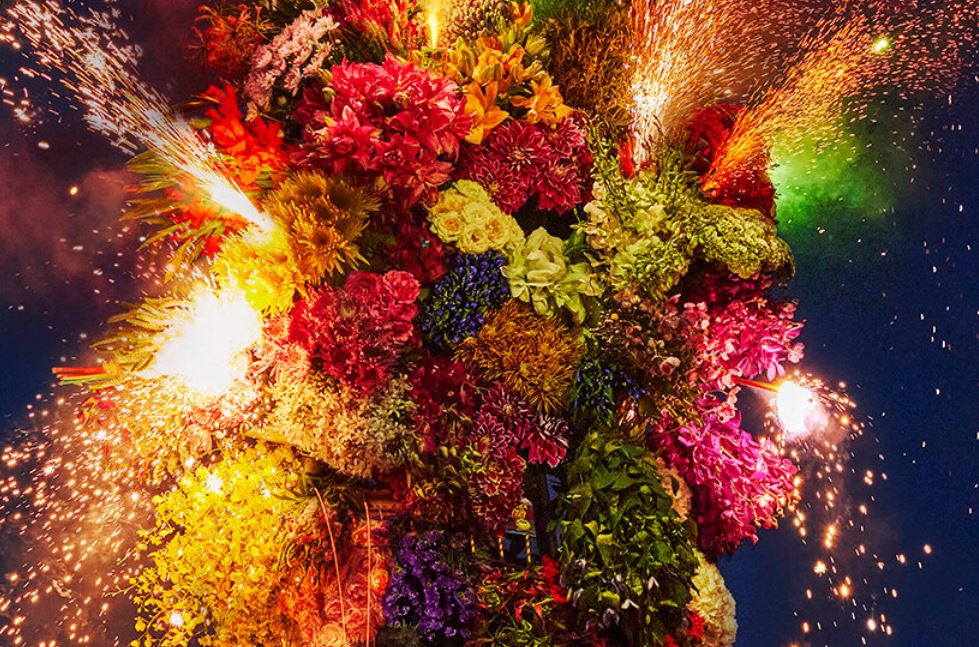
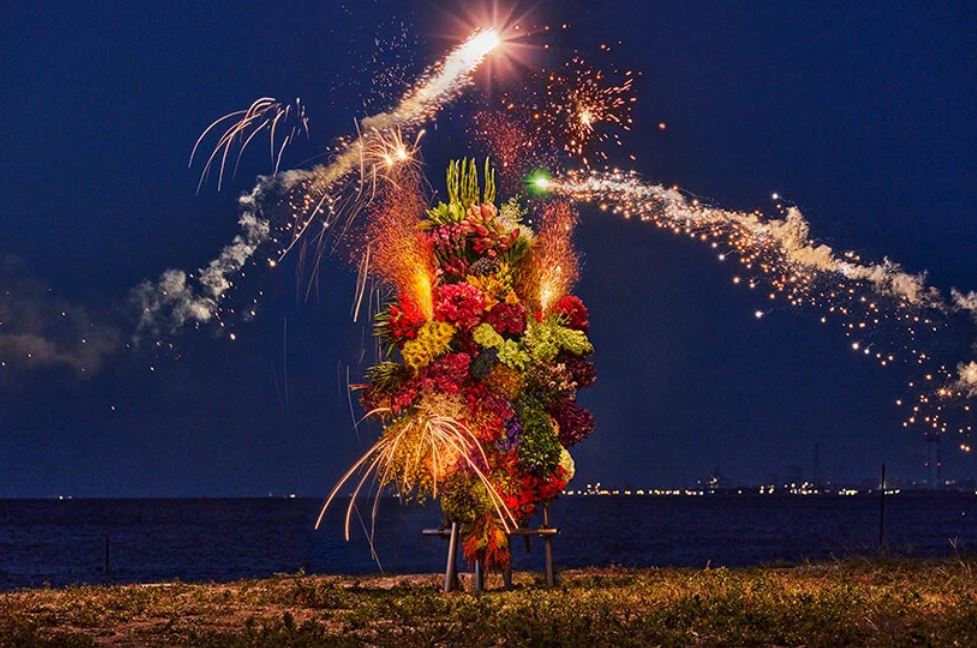
HANABI by Azuma Makoto
By creating the sculpture, Makoto is not only celebrating the beauty of nature, but also exploring the deeper meaning of impermanence, which is meant to evoke a sense of beauty and fragility. Just as fireworks quickly fade away, so too do flowers, but in their brief time, they both bring beauty and delight to the world.